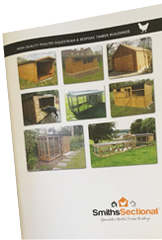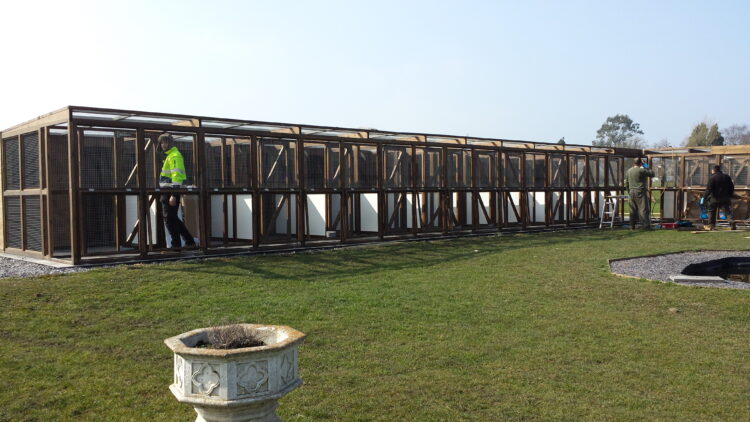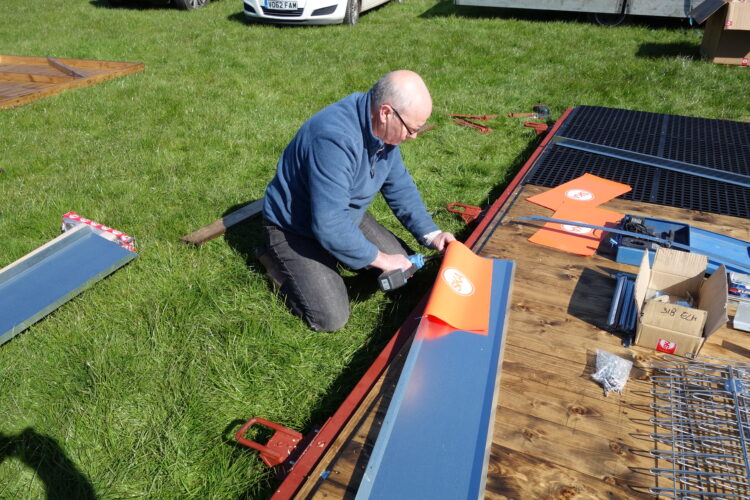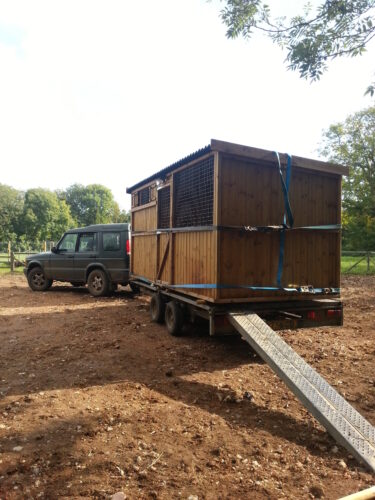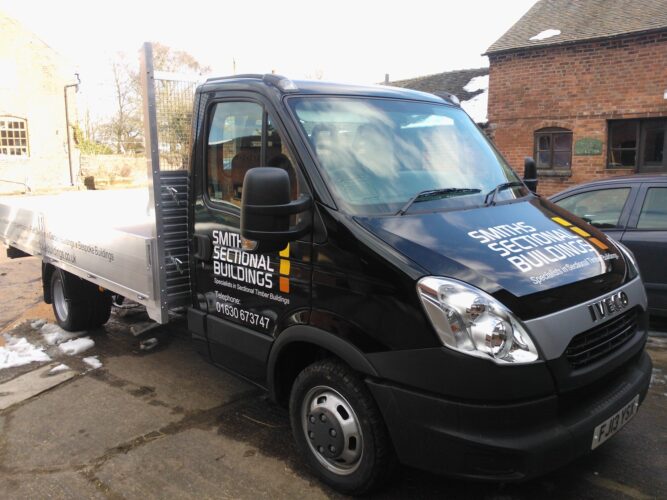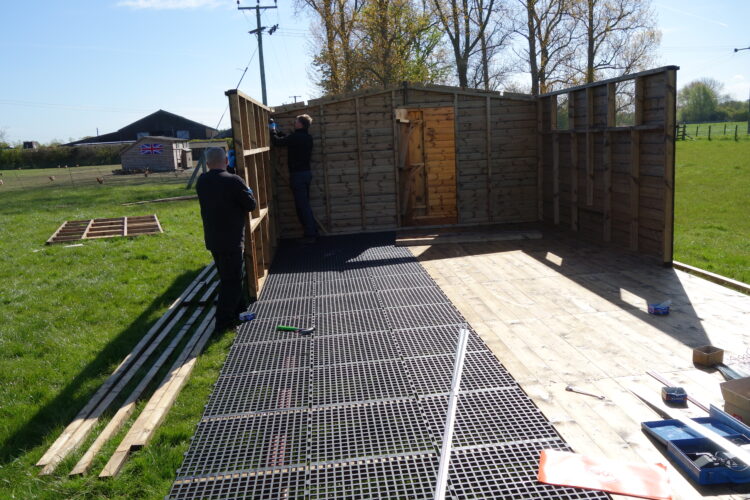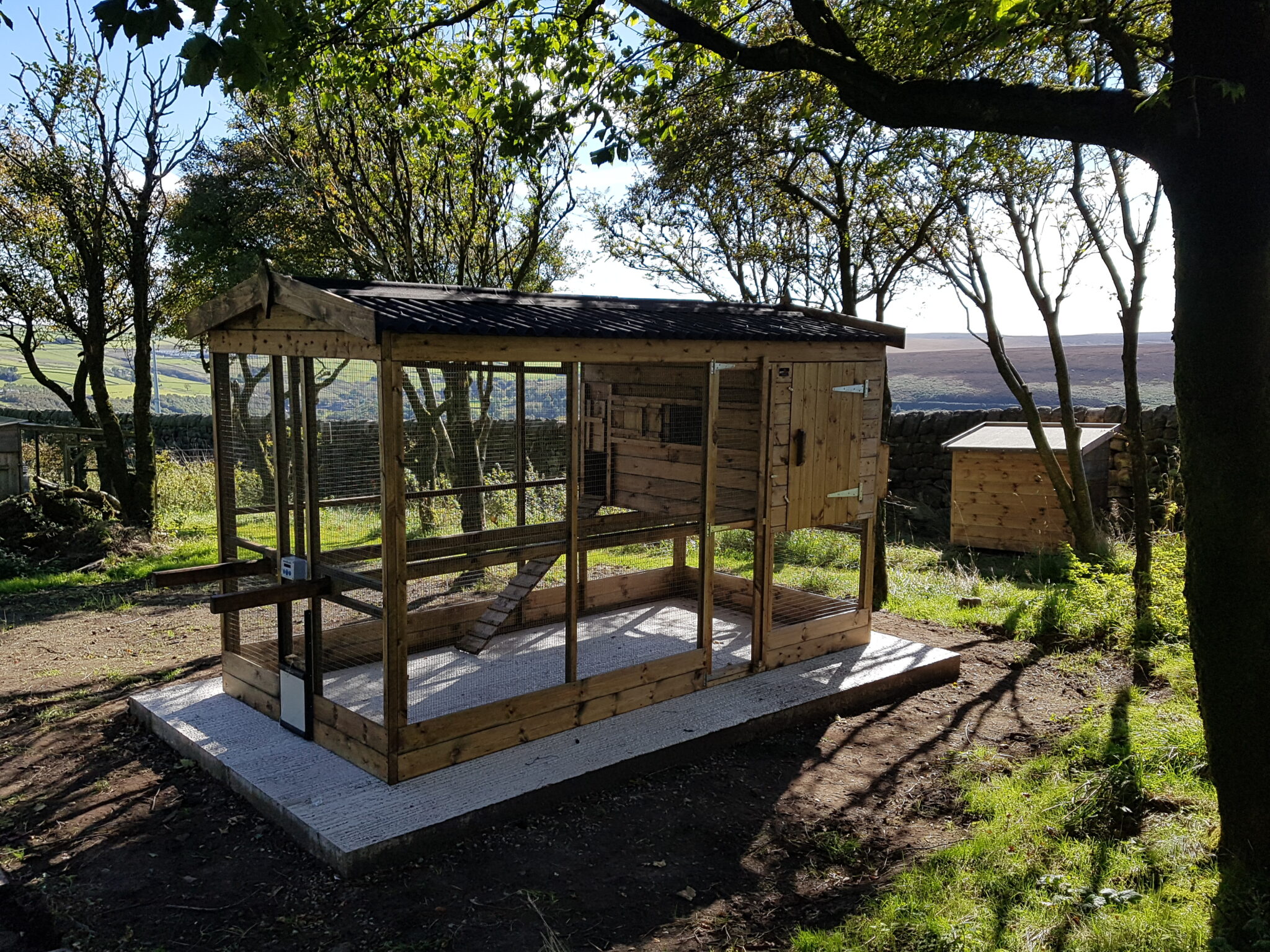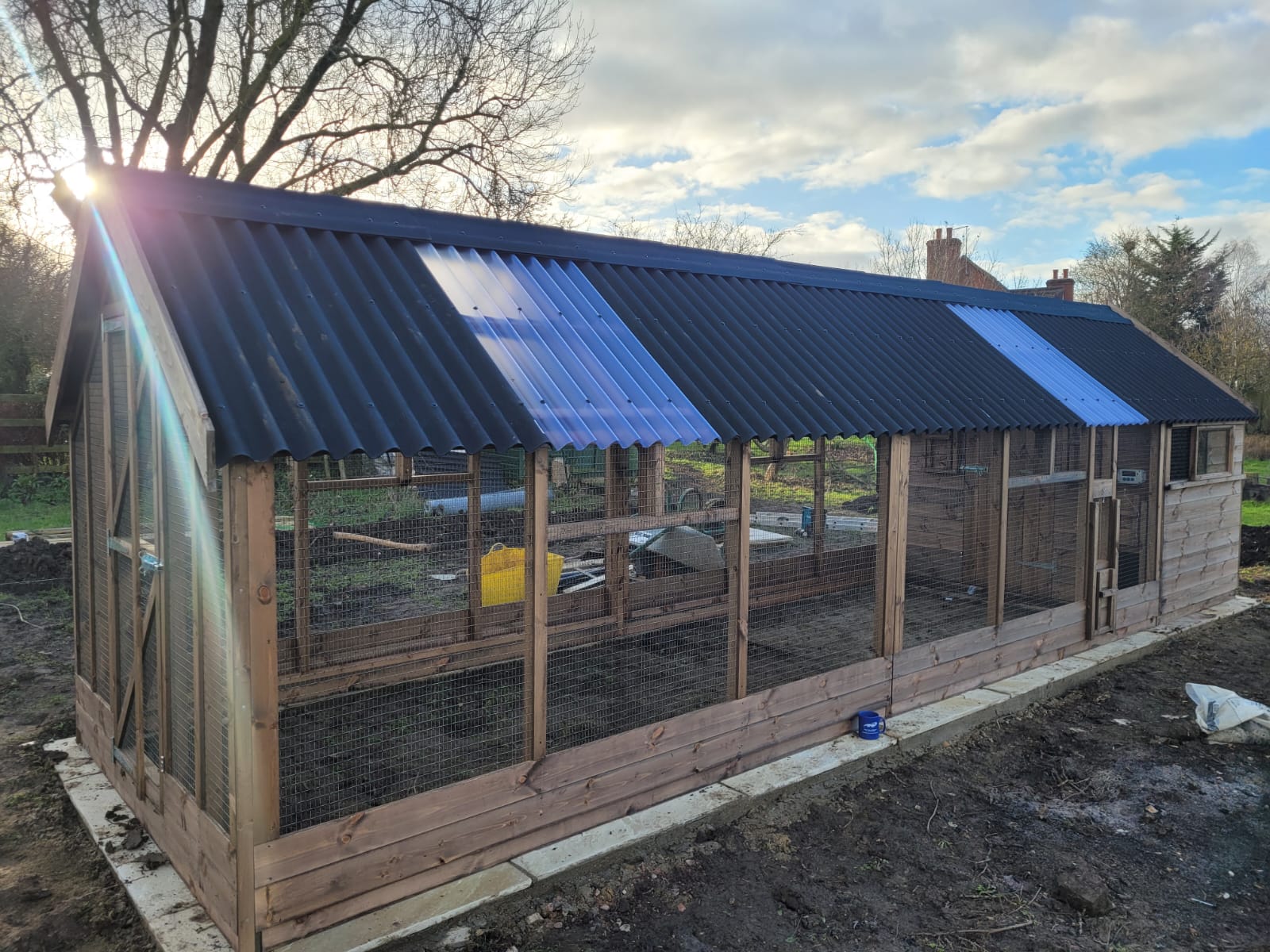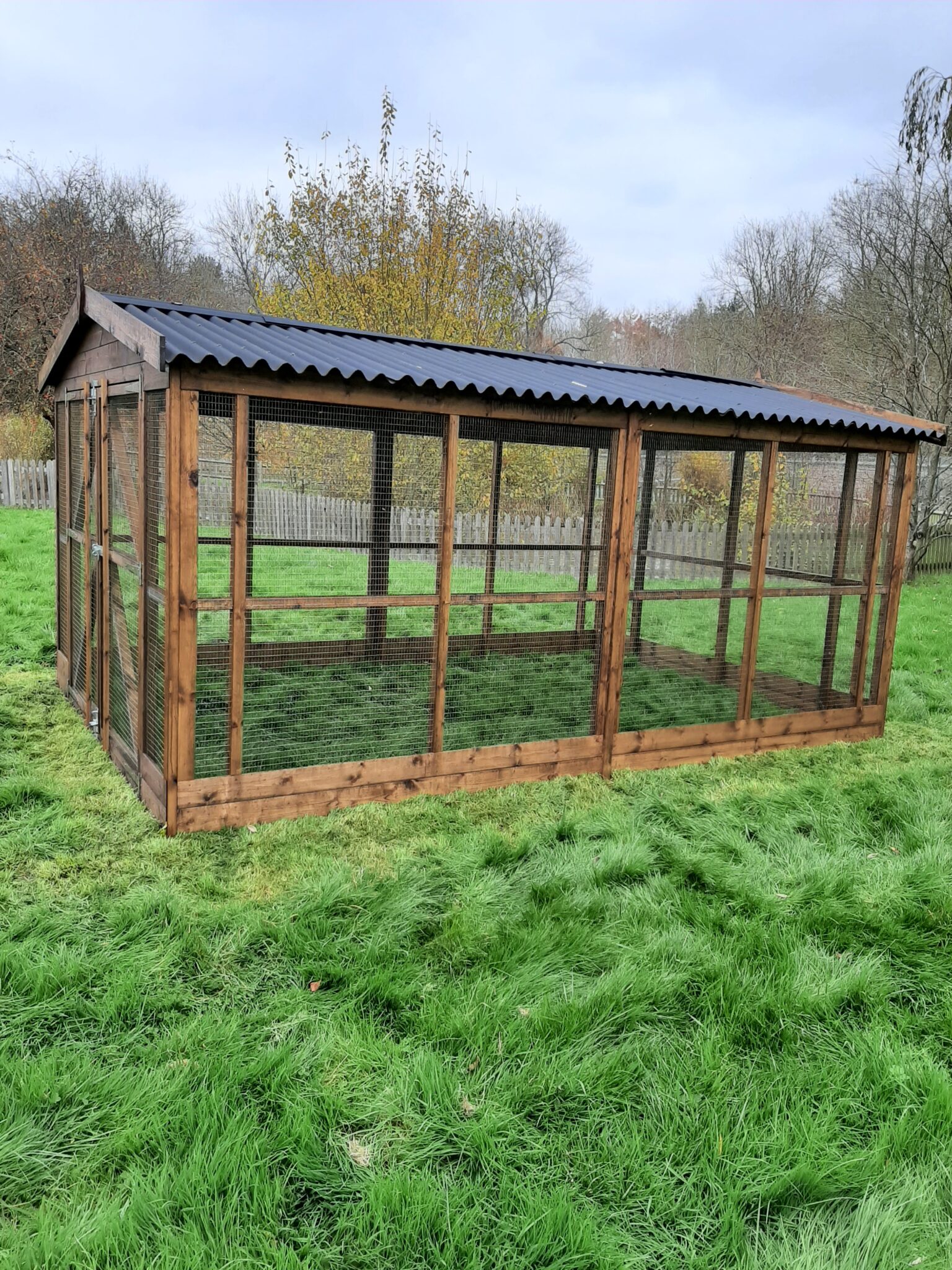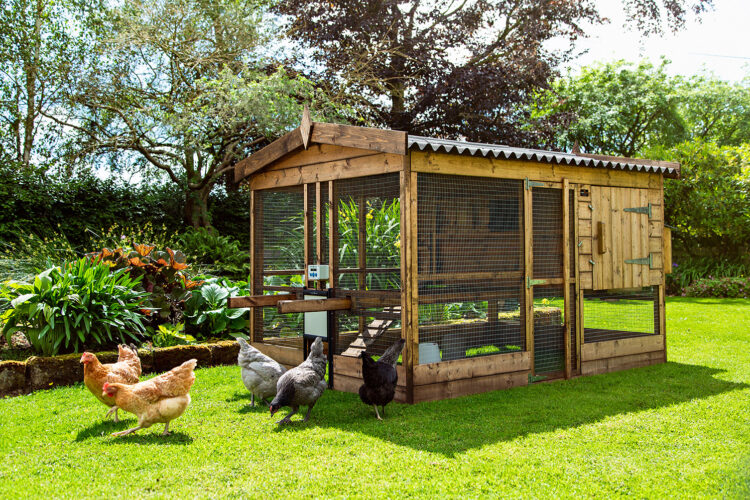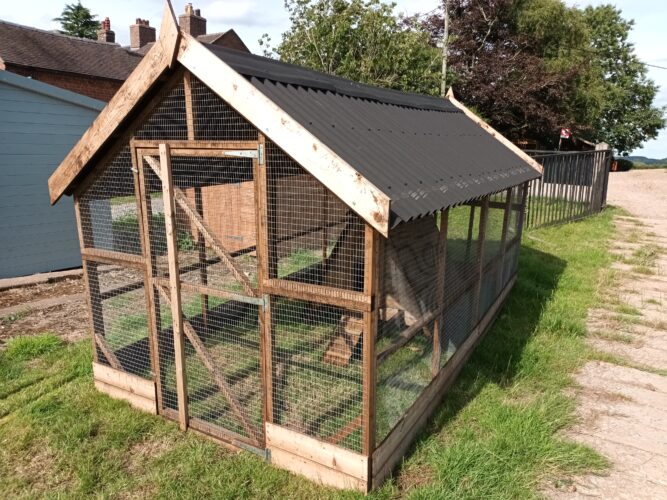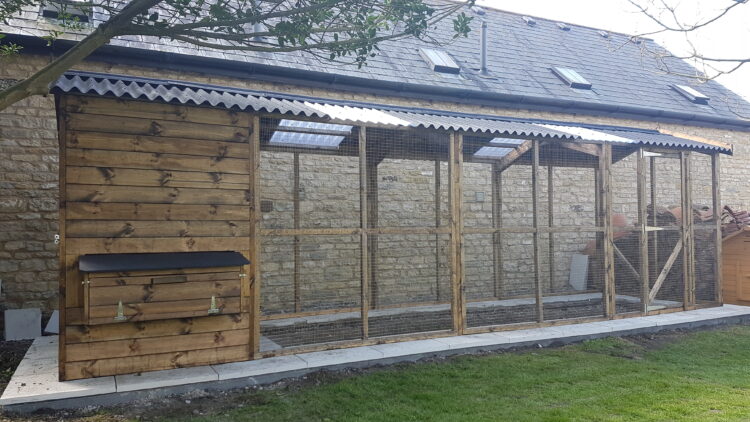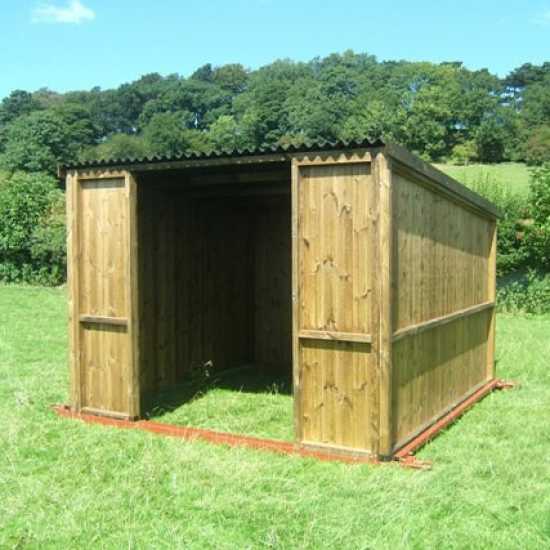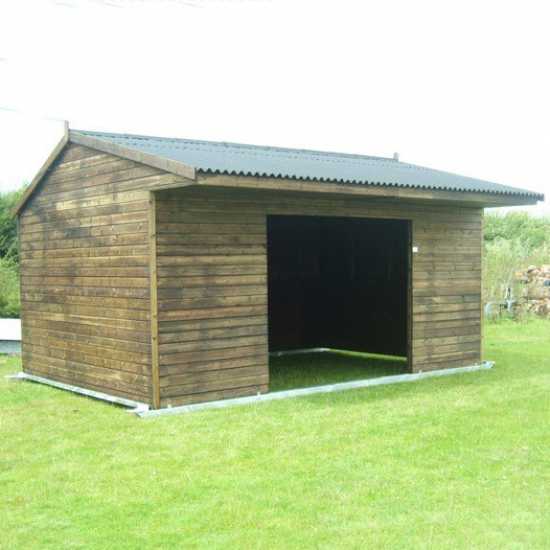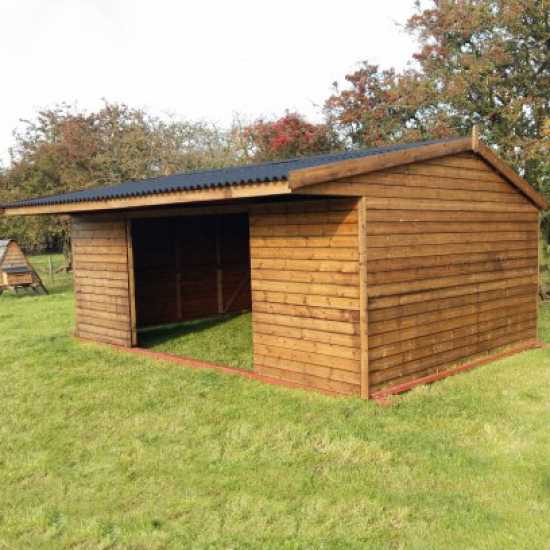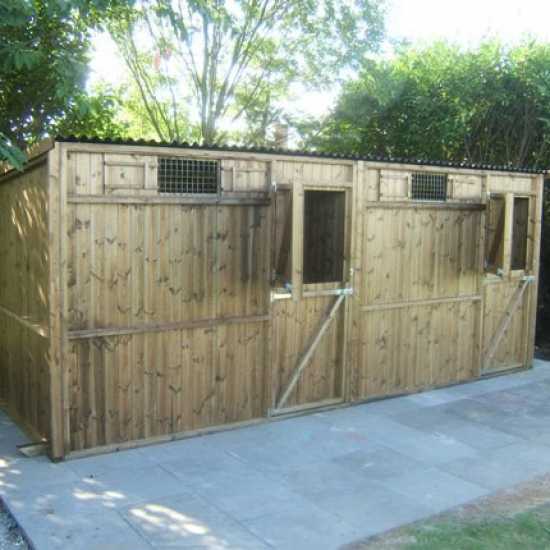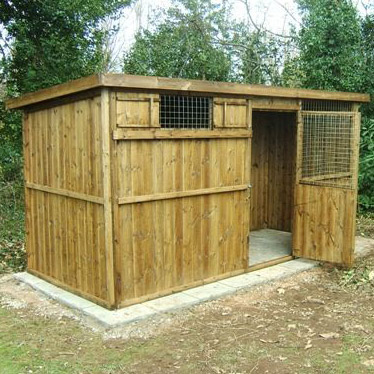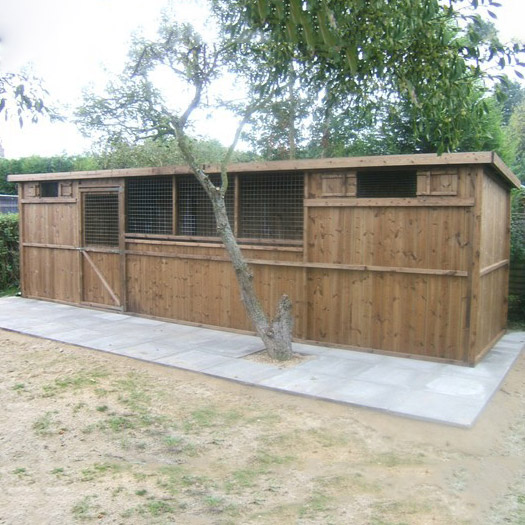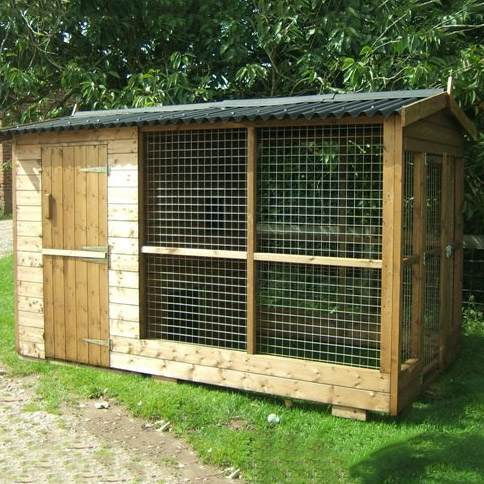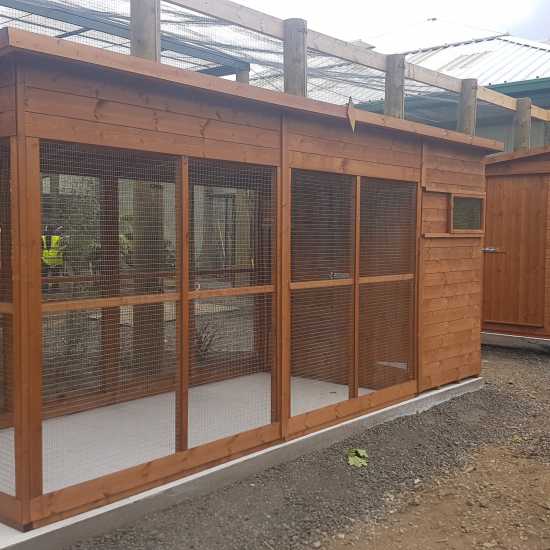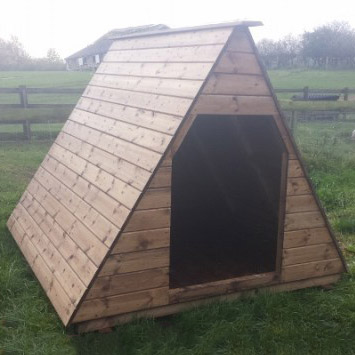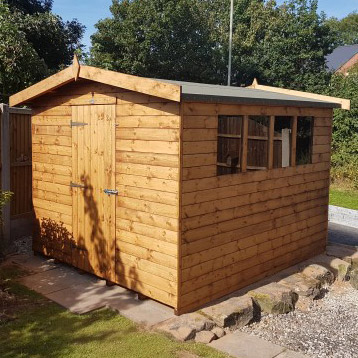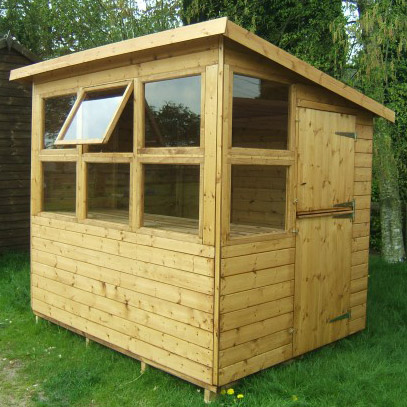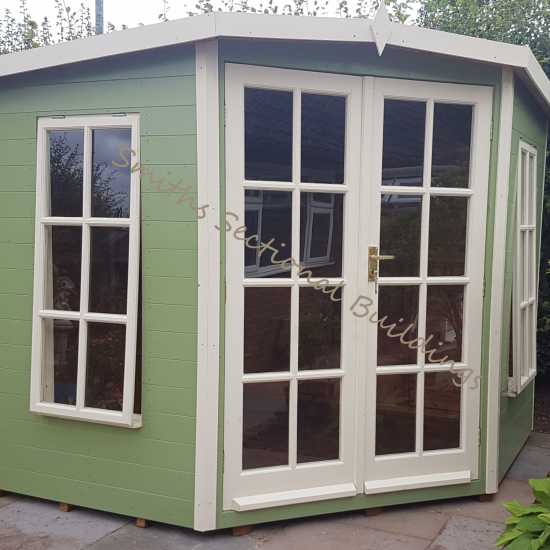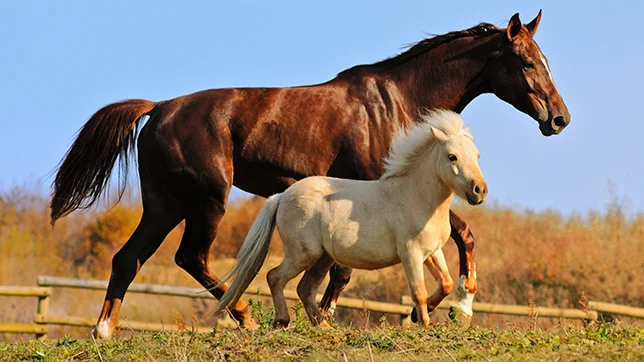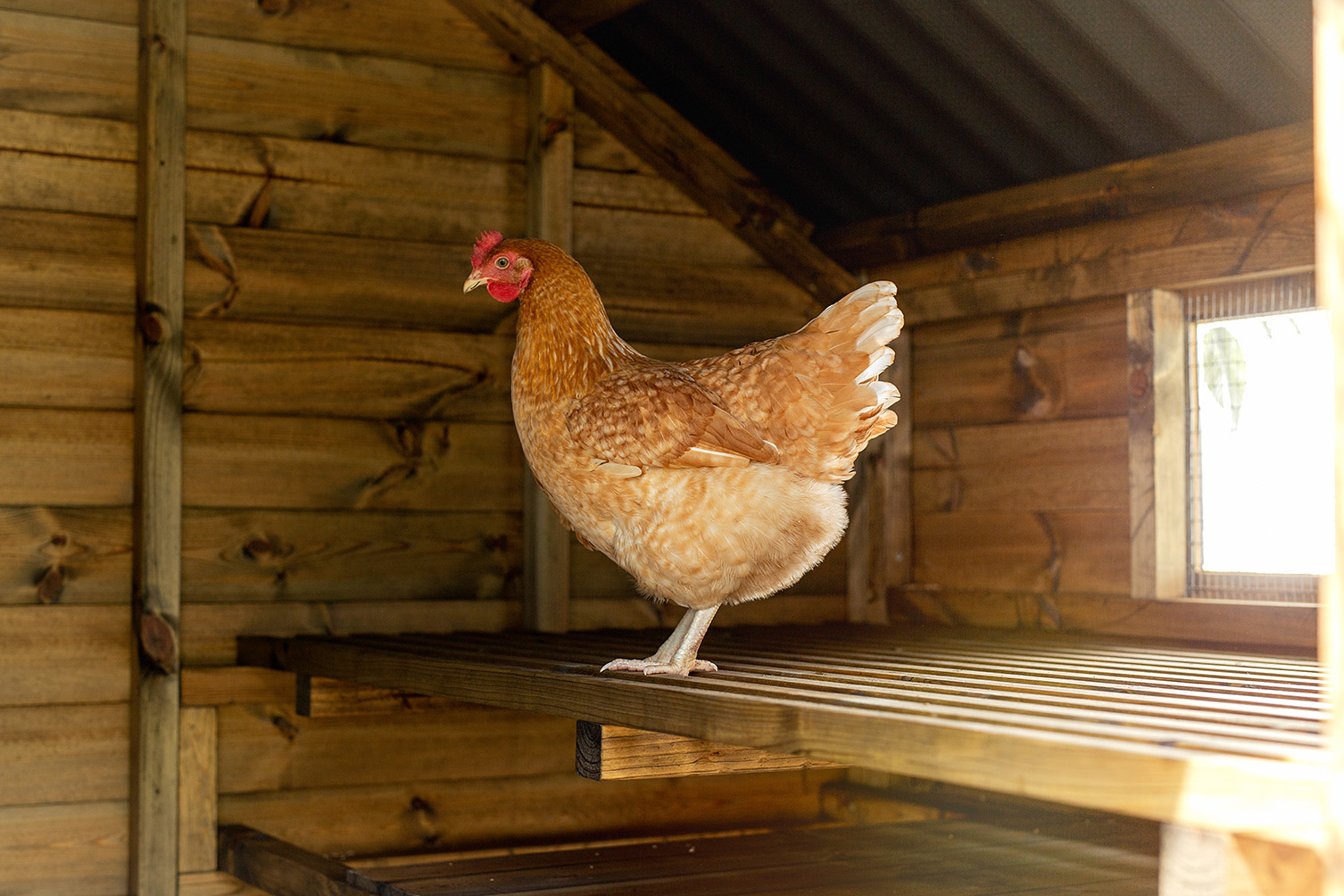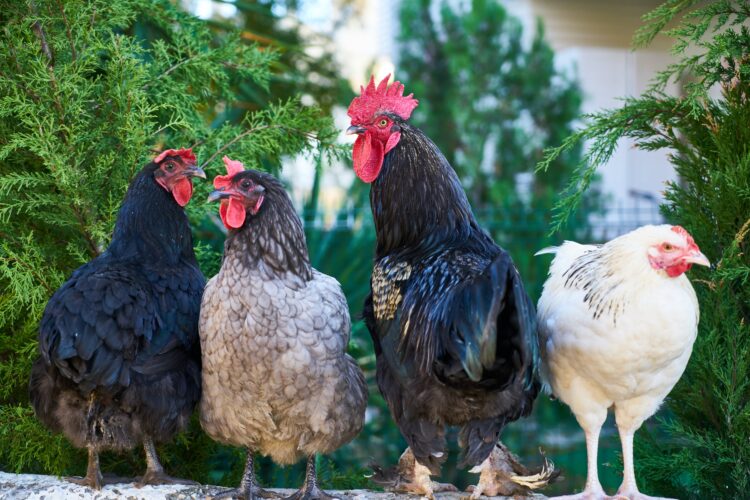
As January settles in, the responsibility of providing a safe and warm haven for your chickens takes centre stage. Whilst we very rarely get prolonged extreme cold temperatures in Britain, we do get some sharp cold spells which can lead us worry about our fury and feathery friends. In this cold weather guide, we’ll explore how you can keep your chickens cosy and comfortable when the temperature plummets.
1. Insulated Chicken Coops: A Winter Haven
Smiths Sectional Buildings understand the importance of providing a secure refuge for chickens during the winter chill. All our chicken coops are made with timber, which is a natural thermal insulator, keeping your hens warm in winter and cool in the summer. Chickens are well adapted to deal with the cold and struggle more with excess heat, so it is important to keep the house ventilated but not draughty. Our high quality chicken coops are designed with flock health in mind, offering a cosy retreat that shields your chickens from the biting cold. We advise positioning your chicken coop in a sheltered location to keep your hens out of the winds. We don’t suggest adding insulation to the inside of your coop as this is more likely to cause problems than offer benefit to your feathered friends. They will snuggle up together on the perches and be quite happy in a timber coop. As you can see in this photo, the cold winter days will not prevent them from laying big and beautiful eggs:
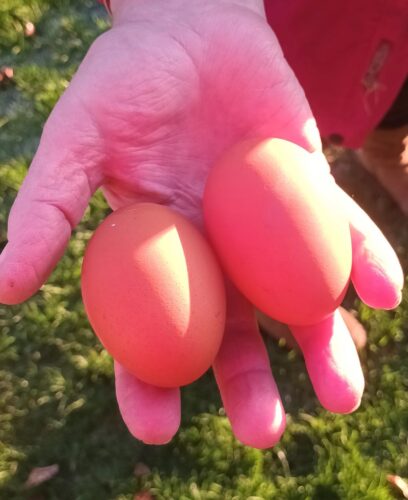
2. Proper Ventilation: Balancing Warmth and Fresh Air
While it’s important to keep chickens warm, maintaining proper ventilation is crucial to keeping hens happy. Smiths Sectional Buildings’s chicken coops are crafted with ventilation features that allow for a steady exchange of air, preventing moisture buildup and ensuring a healthy environment. This balance between warmth and ventilation is essential to ward off respiratory issues and maintain optimal chicken well-being during the winter months. It may be tempting to block all the air vents to make it warmer, but it is essential that fresh air can circulate in the hen house to reduce the chances of your chickens getting respiratory problems.
3. Adequate Bedding: Cosy Comfort for Cold Nights
We recommend providing ample bedding in chicken coops during winter. Straw or hay serves as excellent insulation, keeping the coop floor dry and providing a warm and comfortable surface for your chickens to rest. Proper bedding not only enhances warmth but also contributes to the overall cleanliness and hygiene of the coop.
4. Winter-Ready Feeding Stations
Winter demands extra energy for chickens to stay warm. Adjusting your chicken’s diet during colder months to include more grains and high-energy feeds is recommended. Additionally, ensure that feeding stations are protected from the elements, preventing food from freezing and making it easily accessible for your feathered companions.
5. Frostbite Prevention: Caring for Combs and Wattles
Chickens can be susceptible to frostbite if temperatures fall below -10˚C, especially in extremities like combs and wattles. Applying petroleum jelly to these areas, creating a protective barrier against the cold can help prevent this in these extreme circumstances. Naturally insulated wooden coops and well-ventilated spaces contribute to an environment that minimises the risk of frostbite.
Here are a few pictures of our chickens roaming free and happy in winter even in frostier temperatures when the grass is looking a little less green.
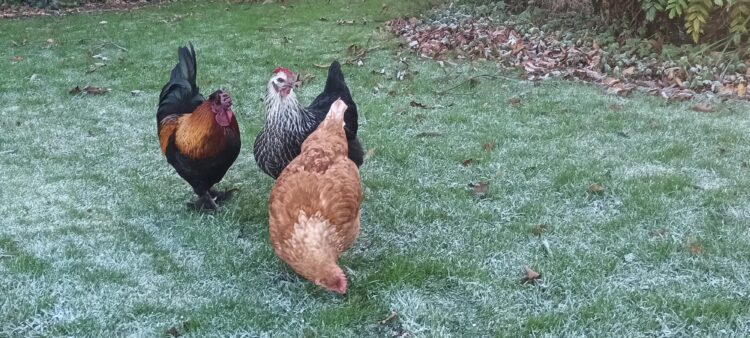
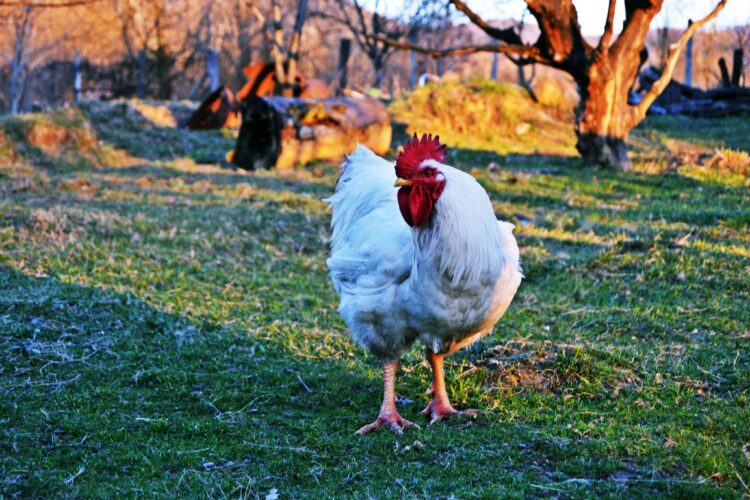
And happy chickens also mean happy children… all enjoying a wintry walk together.
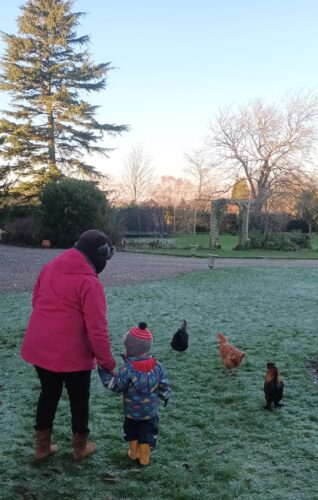
Conclusion
Winter need not be a time of worry for chicken keepers as chickens trap warm air in their feathers. Timber coops have natural insulating properties that keep your hens warm in winter and cool in the summer. Adequate ventilation is key to keeping your birds healthy and happy. Explore the range of naturally insulated chicken coops and winter-ready structures offered by our family business to provide your feathered companions with the comfort and security they deserve.
For more information on winter-ready chicken coops and other premium structures, head to our poultry pages https://www.smithssectionalbuildings.co.uk/Category/Poultry-Houses and embark on a journey to create a cosy haven for your chickens this winter.
